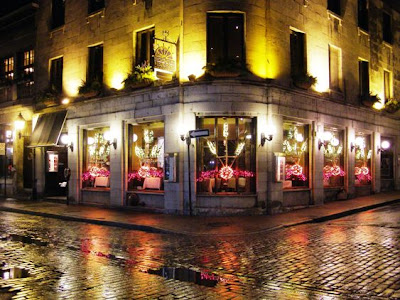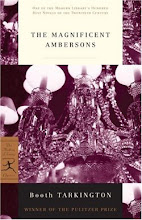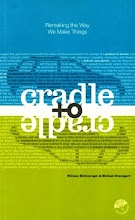A Perfect Storm of Turbulent Gases in the Omega-Swan Nebula, Photo by NASA
“Gravitation is a natural phenomenon and one of the fundamental forces by which all objects with mass attract each other. In everyday life, gravitation is most commonly thought of as the agency that gives objects weight. It is responsible for keeping the Earth and the other planets in their orbits around the Sun; for keeping the Moon in its orbit around the Earth, for the formation of tides; for convection (by which hot fluids rise); for heating the interiors of forming stars and planets to very high temperatures; and for various other phenomena that we observe. Gravitation is also the reason for the very existence of the Earth, the Sun, and most macroscopic objects in the universe; without it, matter would not have coalesced into these large masses and life, as we know it, would not exist.” (Wikipedia, 2008)
Beyond a critical point within a finite space, freedom diminishes as numbers increase. ...The human question is not how many can possibly survive within the system, but what kind of existence is possible for those who do survive.
Frank Herbert (1920 - 1986), Dune
The kinematical and dynamical equations describing the trajectories of falling bodies are considerably simpler if the gravitational force is assumed constant but bodies never fall in unison. This theory is useful to explain the dilemma we all face in the search for happiness and spiritual balance. Humans by their nature, encoded deep into their being are solitary souls that preserve a secret world of existence that is inaccessible to all. I call this the secret garden where we sequester our hopes, fears, desires, and the inner realm of our dreams. Over the course of a life we allow precious few to glimpse past the door of the garden. All of us float in isolation in space subject to the attractive or repulsive forces of gravity. Our family, friends, relatives, mentors and strangers all exert the force of gravitation on us to varing degree. In thermodynamics the closer two bodies are the greater the gravitational bond, although this might not be the case with spiritual influences.
As the gravitational pull grows within the closest of relationships an elliptical orbit is established which represents a balance of energy for a small moment in time. We find our selves falling into comfortable orbits that may or may not allow the individual to nourish and tend the secret garden. As relationships build and families grow the gravitational forces change and shift, creating new orbits some of which are closer, others than travel further from the nucleus. It’s most important to realize that at any moment in time everything is in constant motion and dynamically changing. Each new experience, each new acquaintance, each new flower in the secret garden changes the balance of gravitational forces in our lives. Relationships in order to survive must allow orbits to change and seek new balances. Excessively close orbits can implode and collapse like a black star, consuming all light and energy, destroying both bodies. These orbits are inherently unstable and destructive, but the pull of gravitational forces appears too great to overcome creating a death spiral in the secret garden as the blackness of gravity blinds us.
The Aristotelian theory of gravity was a theory that stated that all bodies move towards their natural place. For some objects, Aristotle claimed the natural place to be the center of the earth, wherefore they fall towards it. For other objects, the natural place is the heavenly spheres, wherefore gases, steam for example, move away from the centre of the earth and towards heaven and to the moon. I like to think that all bodies move towards their natural place eventually overcoming the influences of gravitational forces that traps us into artificial or obsolete orbits. Therefore is becomes our primary challenge to find our natural place where the secret garden flourishes. We must always be moving toward finding the natural place regardless of the consequences, because denial of this state of balance is spiritual destruction and emotional bankruptcy. In this balance a new series of orbits will be established that foster personal growth and fulfillment.
This explanation oversimplifies the inherent contradictions in life which is the duality of existence. Gravitational forces are just one example of the duality of life, being pulled in two directions by opposing forces. We all seek to balance between opposing forces in seeking happiness. Yet it must be understood that happiness is illusionary always fleeting and can not be guaranteed without constant toil and mental exertion. Each of us must always tend the secret garden, unending in our journey to find those precious few souls which we can allow for a moment in time a glimpse past the door into the garden. Over the years, I have become comfortable with the duality of life, since most of my existence is bifurcated by travel, a constant state of disconnection. Acceptance of the duality of life in seeking our natural place, our balance, while always in motion and changing is the essence of spirituality and emotional bliss.
Many religions embrace the struggle in finding balance in the duality of life. Hinduism seeks enlightenment through the acceptance of Advaita or the concept of oneness with the duality of life. Advaita (a+dvaita = non-duality) simply means that the Source, by whatever name known - Primal Energy, Consciousness, Awareness, Plenitude, God - is Unicity, Oneness, Non-duality. The manifestation that arises or emerges from the Source is based on duality, the inevitable existence of interconnected opposites: male and female, beauty and ugliness, good and evil. At any moment there are bound to be interconnected opposites. The sage accepts the duality that is the basis of life and is anchored in peace and tranquility while facing the pleasures and pains of life exactly like the ordinary person. The ordinary person does not accept the duality, the existence of interconnected opposites at any moment of life, chooses between them and is unhappy.
In the teachings of the Yoga of Devotion Retreats, the sage accepts the 'duality' of life; the ordinary person chooses between the interconnected opposites, and lives in the unhappiness of 'dualism'. The man of understanding certainly sees preferences being made in daily living between the polaric opposites, but is totally aware of the fact that the preferences happen according to the individual programming in each case, and are not made by any individual person doing the preference. The man of understanding is, therefore, always in tune with the Source or in balance with gravitational forces. When the final flash of total understanding happens, it is not at all unlikely for the individual to realize the unbroken wholeness of the universe and to clearly see the whole range of polaric opposites as a great illusion or a play of a feigned quarrel between lovers.
Another source of insight and inspiration on the challenge of duality is from a chapter in the book 'The Tao of Physics'. A basic conjecture in Tao, the Chinese philosophy is that there is an underlying equilibrium of two opposing forces in nature. The Chinese call these the yang and the yin. The yang symbolizes the masculine nature of reality, the rational, calculating, analyzing side; whereas the yin represents the feminine, the more sensitive, delicate, conscious side of things. Chinese believe that all human life is interplay between these two forces, and equilibrium is desired between the two for a smooth functioning of things.
This duality is not only seen in human nature, but also in all things in life. Every aspect of life has this dual nature, or rather everything has these seemingly opposite extremes to itself. Good-evil, success-failure, life-death, expansion-contraction, up-down, positive-negative are all examples of these opposites. The greatness of Tao and Hindu philosophies lies not in the realization of this duality of things, but in overcoming the so-called opposite natures of the duality, and realizing the underlying unity in them. It is the art of seeing good in evil or success in failure and living between the lines in harmony.
The duality of life is most prominently in conflict between our inner secret garden and the world around us which requires allegiance and strict codes of behavior. Whereas our dreams, hopes and desires more often lead us into an orbit which is in conflict with the gravitational forces that are pulling us in another direction. It is the inability to escape artificial or obsolete orbits which fuels conflicted emotions and ultimately creates greater and greater instability as one suppresses the need to seek the natural space of self actualization. Living to sustain another’s orbit is not living at all, its indentured servitude of a life denied.
In the early 20th century, Sigmund Freud attempted to define the duality of the human mind with the psychoanalytic model of the id, ego, and superego. Freud posited a structural model of the mind in which these three parts interacted and wrestled with each other for dominance; the result of this constant struggle is the whole of each human's behavior. The gravitational forces that we place upon ourselves are also in constant motion, ebbing and flowing attempting to seek a natural balance. Any state of emotional equilibrium is fleeting as we grapple with new thoughts and experiences.
The term id is derived from Latin meaning inner desire and is dominated by the pleasure principle standing in direct opposition to the super-ego. “The id is responsible for our basic drives such as food, sex, and aggressive impulses. It is amoral and egocentric, ruled by the pleasure–pain principle; it is without a sense of time, completely illogical, primarily sexual, infantile in its emotional development, and will not take "no" for an answer. It is regarded as the reservoir of the libido or "love energy".”
The super-ego tends to stand in opposition to the desires of the id and acts as the conscience, maintaining our sense of morality and the prohibition of taboos. Freud's theory implies that the super-ego is a symbolic internalization of the father figure and cultural regulations. Fractured relationships with one’s father can manifest itself in an over compensation of the super-ego at the expense of the id or keeper of the secret garden.
“The ego is the mediator between the id and the superego; trying to ensure that the needs of both the id and the superego are met. It is said to operate on a reality principle, meaning it deals with the id and the superego; allowing them to express their desires, drives and morals in realistic and socially appropriate ways. It is said that the ego stands for reason and caution, developing with age.”
“When the ego is personified, it is like a slave to three harsh masters: the id, the super-ego and the external world. It has to do its best to suit all three, thus is constantly feeling hemmed by the danger of causing discontent on two other sides. It is said however, that the ego seems to be more loyal to the id, preferring to gloss over the finer details of reality to minimize conflicts while pretending to have a regard for reality. But the super-ego is constantly watching every one of the ego's moves and punishes it with feelings of guilt, anxiety, and inferiority. To overcome this, this ego employs methods of defense mechanism. Denial, displacement, intellectualization, fantasy, compensation, projection, rationalization, reaction formation, regression, repression and sublimation were the defense mechanisms Freud identified.”
As we struggle to seek a natural state of balance it is easy to see how both internal and external forces can create conflicted emotions which can paralyze an individual, manifesting into feelings of helplessness, confusion and conflict ultimately laying the foundation for depression. All of us must embrace the duality of life recognizing that some actions of self survival may be viewed as instability in the orbits surrounding us. Acceptance of the duality of opposing forces allows us to embrace adjustments in our orbit by the ones that love us the most, for it is a principal of natural law that no orbit can remain static or fixed. As a result no one should expect to keep someone confined to an orbit that is in conflict with the natural place of self balance.
Outlining a framework for happiness is the easy part, actually finding and maintaining that natural state of grace is a life long pursuit, a journey without end that will take us to places unimagined. We should not fear where the attractive forces of nature may take us as long as it toward balance where the secret garden flourishes and dreams are realized. I have found that taking my hands off the wheel, eliminating the desire to steer and manage gravity, is the most empowering feeling of all. Seek out whose individuals who make the garden grow, allow the gravitational forces of attraction to move you to your natural place or otherwise fall into the blackness of gravity.
The great majority of us are required to live a life of constant, systematic duplicity. Your health is bound to be affected if, day after day, you say the opposite of what you feel, if you grovel before what you dislike and rejoice at what bring you nothing but misfortune. Our nervous system isn't just a fiction, it's part of our physical body, and our soul exists in space and is inside us, like teeth in our mouth. It can't be forever violated with impunity.
Boris Pasternak (1890 - 1960), Doctor Zhivago
In the space which thought creates around itself there is no love. This space divides man from man, and in it is all the becoming, the battle of life, the agony and fear. Meditation is the ending of this space, the ending of the me.
Krishnamurti
































































